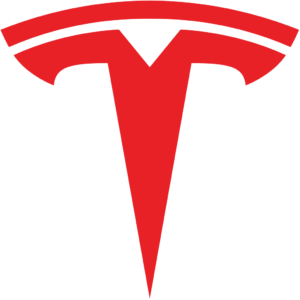Readers may remember from my previous blogs several concerns about Ford Motor Company’s management and future. Significant among them were the articles on Ford’s refusal earlier this year to get into its own EV battery manufacturing (either on their own or by acquiring a leading battery manufacturing company), and mention of Ford’s heavy debt load, last noted at about $155.2 billion as of 2/15/2020.
You may also remember that as of last October 1, 2020 Ford had a new CEO – James Farley, a long-time Ford employee, known as a real “car guy”. This term is the ultimate accolade in Detroit – an auto executive with grease under his fingernails who typically has an engineering/manufacturing background, loves to race cars, and is very performance oriented. Think Bob Lutz, for instance, who even flew his own Russian fighter jet for kicks. Farley restores performance Fords and races them in vintage race meets to this day. Nonetheless, a critical question shadows Farley: is this traditional car guy the person to lead Ford into its electric vehicle transformation, where EVs are powerful computers on wheels? The jury will be out for a while on that question, and its verdict could reflect disaster for Ford.
Farley’s predecessor, Jim Hackett, a former Steelcase CEO was definitely not a “car guy” and didn’t move the needle very much during his three year tenure at Ford. Lackluster and downhill might be two words associated with Hackett’s leadership and tenure.
One current area of concern at Ford is its soon-to-be empty CIO position. Ford’s most recent CIO Jeff Lemmer is retiring on January 1, 2021. On November 2nd, Ford announced it was bringing back its former IT Chief Technology Officer, Vijay Sankaran, who had left Ford in 2013 to move to TDAmeritrade where for the past four years he has been TDA’s highly regarded CIO. However, perhaps because he got a look at the current state of IT at Ford (what, if anything had changed or improved since he was last there?) and the challenges and possibly limited budgets associated with addressing those issues, very soon after his returning CIO announcement, Sankaran stated that he would not be returning to Ford after all, instead wanting to “spend some time with his family”. Now Ford must go back to the market and recruit another CIO – a time consuming and risky process. If Ford is to regain any sense of competitiveness, especially with its foray into EVs, it simply must have a top 10 CIO and a state-of-the-art IT department. This will cost Ford time and money to accomplish – – two items it is short on.
In November, Farley announced Ford was revisiting its battery sourcing and vertical integration decision I described recently and was considering battery manufacturing after all, but for the wrong reason(s)! Instead of looking at strategic reasons for increased vertical integration – battery chemistry and production expertise, lower costs, and securing an adequate supply of EV batteries for a competitive future in the EV marketplace, Farley’s concern reportedly was what to do with all the Ford workers that would be displaced by Ford’s switch from ICE to electric vehicles due to the 40% reduction in parts count of EVs versus ICE vehicles. So thinks Farley, let’s take all those car and pickup truck assembly line workers and stick them in a plant that will make batteries, with little apparent thought on his part of the vastly different knowledge, skills, and experience needed to produce millions of high quality battery cells per day. Apparently Ford and Farley are still mulling this decision over. Clearly Ford does not have a sufficient and timely battery supply secured at this point and LG Chem’s lawsuit of SKI – Ford’s and VW’s EV battery supplier (see here) has not been ruled on as of this date. The entire EV battery supply industry is severely constrained, and Ford is near the end of the line when it comes to lining up an adequate future supply of EV batteries, even for its relatively modest EV production forecasts. This is especially so given that Ford has to replace some 27,000 EV batteries in its European Kuga PHEV models (story here). Meanwhile tempus is fugiting and Ford falls even further behind.
One initiative Farley has tackled in late November is trying to reduce Ford’s warranty costs. Normally these warranty costs are closely held figures for obvious competitive reasons. However, such figures are available for a wide variety of companies through such subscription services as www.warrantyweek.com, or by plowing through the depths of a company’s regulatory filings. However, a recent Automotive News Article coincident with a Reuter’s article laid out Ford’s warranty costs as a percent of sales for Q3 years 2010 through 2020. Ford’s warranty costs increased from roughly 2.0% of sales in Q3 2010 to 4.3% of sales in Q2 of 2020. For the first nine months of 2020, Ford’s warranty costs were $3.87 Billion, while GM’s warranty costs for the same period were $1.68 Billion, even though GM outsold Ford in 2019 by about 19%. Extrapolated for the full year based on these rates, Ford’s 2020 warranty costs would be $5.16 Billion. Why wasn’t Hackett all over this issue at least 18 months ago??
In 2019 Ford’s US sales were 2,422,698 vehicles. From our previous blog, Ford’s average 2019 vehicle sales transaction price was $45,599 a vehicle. That makes Ford’s US vehicle sales of $110.5 Billion. At 4% of sales warranty costs, that’s a warranty cost of about $1,824 per Ford vehicle sold! That’s a shocking amount of waste for an auto company that has been in business for over 100 years.
Interestingly, Ford attributes only one third of its warranty costs to bad parts from suppliers. The remaining two thirds are a result of Ford’s own design and manufacturing issues.
The articles go on to state that to reduce the bad parts from suppliers, Ford will resume tracking and inspecting incoming parts from suppliers. Traditionally this would mean by sampling and statistical techniques, not 100% part inspections. Ford’s incoming part quality teams had been disbanded as a cost cutting move a few years ago. So much for “bean counter cost cutting”. Furthermore, nothing like attacking only one-third of the problem. What’s being done internally about Ford’s design and production quality issues?
It is painful to watch these traditional “Big 3” auto manufacturers struggle though these leadership and strategic issues. As a former employee of both Ford and GM, it is even more painful to watch the sins of inept managements through the years accumulate rather than diminish.
Contrast this to Elon Musk’s and Tesla’s strategic thinking, innovation, speed of decision making and execution, and Tesla’s continual efforts at cost reduction and quality improvement. Is it any wonder that people – young people in particular – want to work for Tesla where its continued 50% annual growth spells O-P-P-O-R-T-U-N-I-T-Y?
Image courtesy of Pixabay
Your feedback in the form of comments or suggestions are welcome in the comment window. Thank you for following my blogs on this site and for participating in my blogging community.





